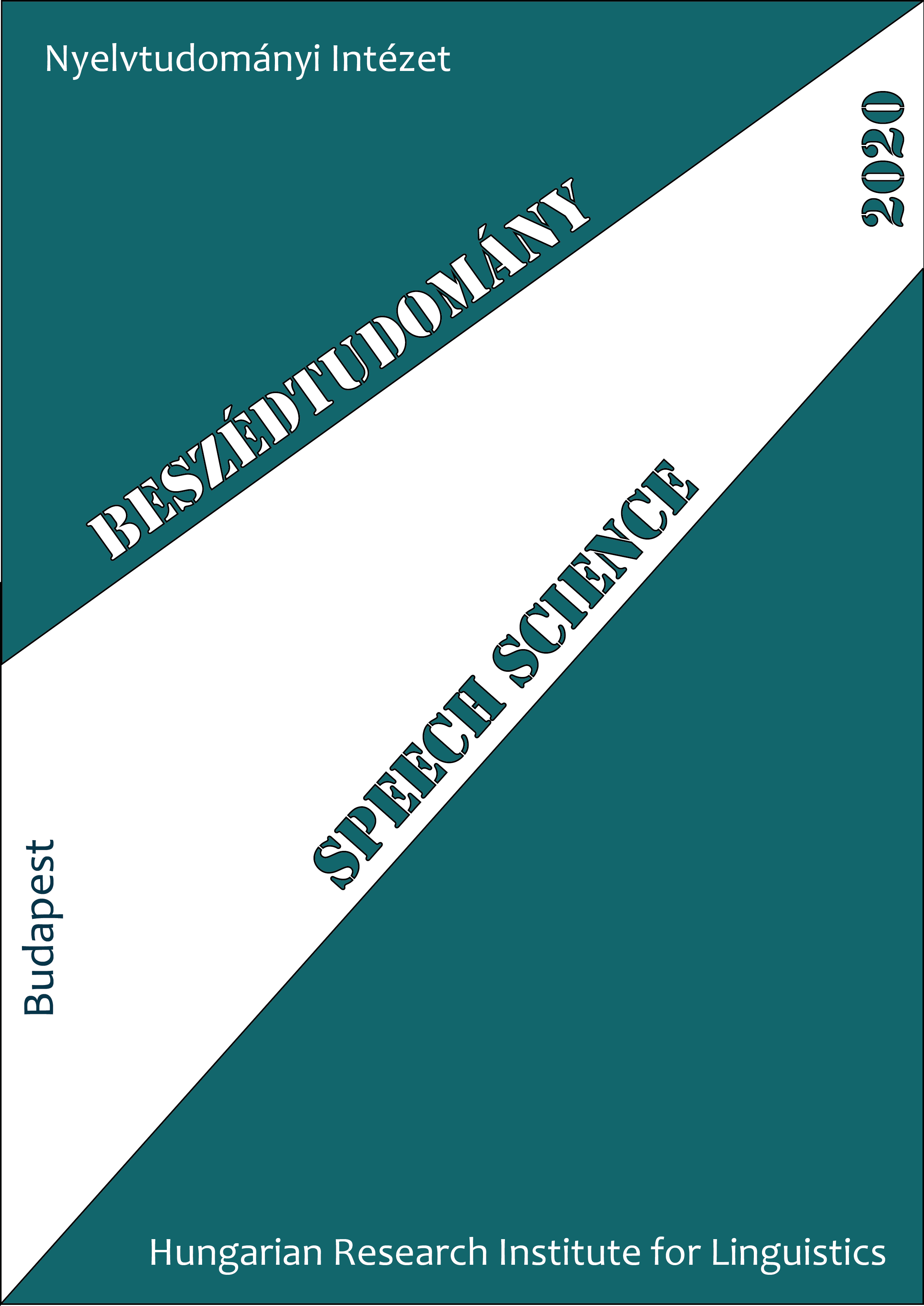Explozívák realizációja fiatal és öregedő felnőttek beszédében
Absztrakt
Possible gender and age related differences have been hypothesized and suggested by previous work on voice onset time of stops. Most studies investigate not truly voicing languages, but those that were carried out on truly voicing languages, like Hungarian, explore only voiceless stops. However, the simultaneous production of voicing and closure are contradictory due to the intraoral pressure build up. Therefore the question arises if gender or age related articulatory differences/changes may result in different realisations. The present study aimed to introduce preliminary results on possible gender and age related realisations of stops in Hungarian that contrast prevoicing and short lag VOT. 10 intervocalic, word-medial realizations of /d t g k/ per subject were analyzed in read speech of 30 young and 30 aging subjects (15 men and 15 women in both groups) from the BEA-database. The Scheirer–Ray–Hare-test was used to compare the results between age and gender groups. The VOT of voiced stops was longer in aging subjects’ pronunciation than that in the younger ones, and it was longer in female subjects’ speech than in men’s read speech. No clear tendencies were found for the voiceless stops. The approximalised/fricated or no-burst realisations of the velar stops were more frequent in men’s pronunciation than in that of women. The voicing ratio did not show clear tendencies. The longer VOT of voiced stops in the aging group and in female subjects’ speech may be the result of longer closure phases that might be resulted by slower articulation. This assumption needs further investigation. Results of further parameters did not show consequent differences between the analysed speaker groups that, together with previous results for Hungarian, suggest that aging and gender have low or no direct impact on these features. The results of the present study serve as preliminary data on the gender and age related differences in stops of prevoicing languages, therefore, further studies are necessary.




